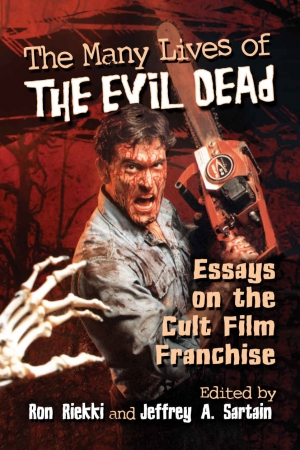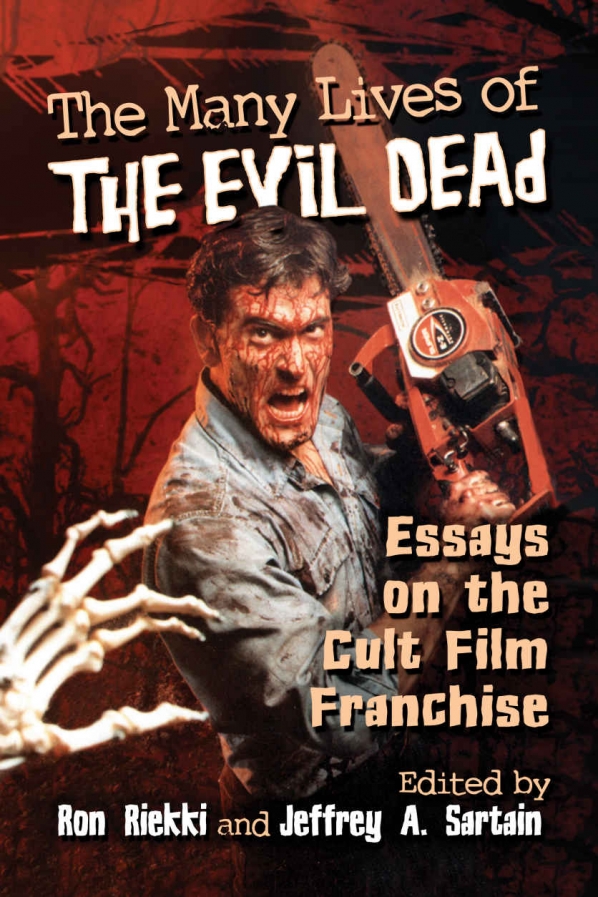Drs. Leon Lewis and Alexander Pitofsky recently contributed to a book titled The Many Lives of the Evil Dead: Essays on the Cult Film Franchise (McFarland 2019).
In Dr. Lewis’ essay, titled “Perceptions of Paranormal Plausibility: Method and Manipulation in the Evil Dead,” he uses a theoretical framework by the early 20th century film critic Hugo Munsterberg to analyze how director Sam Raimi pulls the audience into the plausibility of his horror. Dr. Lewis analyzes how Raimi uses the four elements (earth, air, fire and water) in the film’s mise-en-scène to show how the world around his protagonists is morphed and influenced by the presence of the evil dead.
Dr. Lewis said that “when I was first asked to contribute, I’d never seen the film.” After initially turning down the project, he saw the movie and liked it so much that he changed his mind. Dr. Lewis has recently been working on different projects, including a study guide for for AP Language and Composition students, and he says that this project was a refreshing change of pace. “Writing different things helps you grow,” he exclaimed, and clearly expressed his excitement for whatever opportunity came next.
Dr. Alex Pitofsky published an article titled “The Evil Dead and Punk Rock Cinema.” Pitofsky explained that while in most circumstances he usually seeks to have his work published, the editor of the anthology actually invited Dr. Pitofsky to contribute to the anthology due to his previous scholarship on film studies. Before he knew what he’d write his essay on, Dr. Pitofsky rewatched the movie, began researching, and realized that The Evil Dead has largely been called “punk rock cinema.” Scholars haven’t really elaborated on the idea of punk rock cinema, and Dr. Pitofsky’s motivation for the project was to flesh out the similar qualities between The Evil Dead and punk rock cinema. The essay reflects on how punk rock is a stripped down version of rock and roll, and The Evil Dead is certainly a stripped-down horror movie. Dr. Pitofsky explained that:
“Seventies punk music was a reaction to the way rock music had gotten very sophisticated and arguably pretty pretentious and [these new rock artists] had this stripped down element, whether you’re talking about the Ramones, the Sex Pistols, Clash or other early punk groups. This movie is very stripped down, it’s just all about getting some young people into a dangerous situation, having horrific things happen one after another, there’s not a lot of exposition or character development. This is like horror filmmaking stripped down to its most basic elements the same way punk rock was stripped down to the basics of rock music.”
Other key points in the article consider how early punk rock music and punk rock cinema are both often low-budget and independent projects. The director, Sam Raimi actually hired personal friends to act in the movie, believing that the idea and story behind his vision would lead to success, even without substantial financial backing. Dr. Pitofsky also points to the actual style of the music as being similar to The Evil Dead, considering how relentless and quick to the point both the movie and punk rock music are.
Both contributions from Dr. Pitofsky and Dr. Lewis demonstrate the versatility involved in academic work, and moreover, exemplify the wide variety of conclusions that can arise from analyzing the same piece of popular culture. This book is now available for purchase from most book distributors.
Article written by Daniel Mosakewicz and Nathan Plybon.

